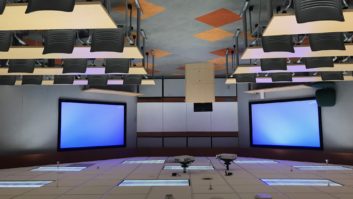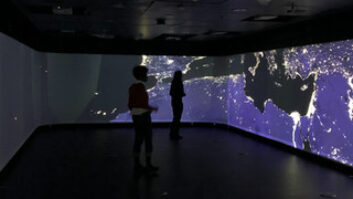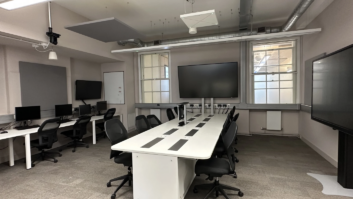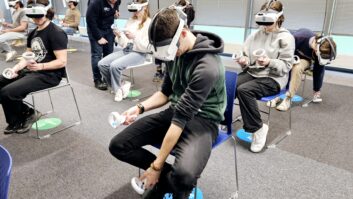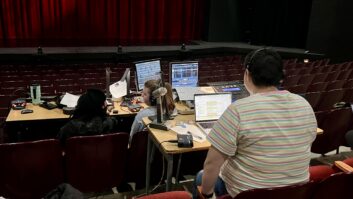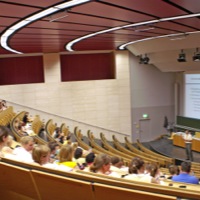
A Peavey MediaMatrix NION DSP processor solution has been implemented as part of a completely new AV solution at Frankfurt University. Current renovation work at the education facility, which is located in the north-west part of the city, is set to increase its student capacity from 10,000 to 45,000 by 2014. With the new AV solution needing to enable faculty and students access to a full range of media, including recording, Frankfurt-based consultants Detlef Hartmann and Stephan Mathias (of the Hartmann & Mathias Partnership) employed a 10GB fibre-optic network backbone to the new AV solution. This is responsible for 96 audio channels for one single location, while several hundred channels are available for the entirety of the university. The MediaMatrix solution was deployed over two buildings – the ISZ, which contains all the large lecture theatres as well as a number of classrooms – and the Biologicum (pictured), a separate building which accommodates a variety of laboratories, classrooms and lecture rooms. Audio had to be matrixed with video distribution hardware, which required a flexible solution that could deal with a mix of analogue and digital I/O. For the Riedberg Campus a sizeable Peavey MediaMatrix system was deployed, for its Dante compatibility, intuitive use, and ability to accommodate large channel counts. Each building is a separate network. For the main ISZ project, three NION n6s and one NION n3 (all 4 nodes in a Peavey XDAB cluster) were deployed along with 13 CAB4ns (CAB is Peavey’s Dante breakout box, which is in place to taxi audio on and off the Dante Network providing analogue connectivity). For the Biologicum project, one NION n6 and three NION n3s (all 4 nodes in a Peavey XDAB cluster) were installed, along with 17 CAB4ns. An additional NION n3 and two CAB4ns were installed for a smaller project within the Biologicum to cater for some additional meeting rooms. What’s more, all of the NIONs and CABs are Dante-enabled and fitted with analogue input and output cards. “We are able to do Layer 3 routing easily and efficiently, which we couldn’t do with other network technologies,” comments Mathias. “Dante’s compatibility with AVB standards also promises a secure investment for the university’s future, which is one of the main reasons we went with this solution.” Peavey’s Sebastian Hesse was involved as a support engineer to BFE Studio Systems, the company that carried out the build. “The project started back in 2010, and I came to deal with the new software and upgrades during phase two, which has just been completed. We’ve now won the bidding for phase three, so BFE will start working on that in the next six weeks or so,” Hesse reveals. “This will be another new campus building, completely working with Dante-equipped MediaMatrix; and the video signals will connect via Crestron RoomView.” mm.peavy.com
